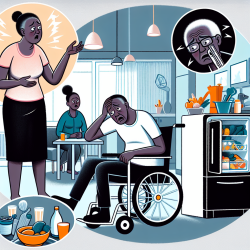Understanding the Role of Third-Party Callers in Suicide Prevention
In the realm of mental health, the power of community and support networks cannot be underestimated. The research article "Third-party callers to the national suicide prevention lifeline: Seeking assistance on behalf of people at imminent risk of suicide" sheds light on an often-overlooked aspect of crisis intervention: the role of third-party callers. These individuals, often family members or friends, play a pivotal role in connecting those at risk with life-saving resources.
Key Findings from the Research
The study, conducted by Gould et al., involved reports on 172 third-party calls concerning individuals at imminent risk of suicide. Here are some key findings:
- Third-party callers are most likely to be concerned about a family member or friend.
- These callers are significantly more likely to be female and middle-aged or older.
- Counselors were able to gather crucial information about the risk of suicide and identify at least one intervention to aid the person at risk in nearly all cases.
- Emergency services were contacted in 58.1% of the calls, a higher rate than calls placed by the person at risk themselves.
- Non-emergency interventions were implemented on 68.6% of calls, showcasing the diverse range of support options available.
Implications for Practitioners
For practitioners in the field of speech-language pathology and mental health, these findings underscore the importance of equipping third-party callers with the tools and knowledge to act effectively in crisis situations. Here are some actionable steps practitioners can take:
- Educate the Community: Conduct workshops and seminars to inform the public about the signs of suicide risk and the importance of reaching out to helplines.
- Enhance Communication Skills: Train crisis counselors to effectively communicate with third-party callers, ensuring they can extract vital information and provide appropriate guidance.
- Develop Resources: Create easy-to-understand materials that third-party callers can use during a crisis, such as checklists or flowcharts outlining steps to take.
- Encourage Further Research: Advocate for more studies to explore the characteristics and needs of third-party callers, leading to more tailored interventions.
Encouraging Further Research
While the study provides valuable insights, it also highlights the need for ongoing research. Understanding the dynamics between third-party callers, counselors, and individuals at risk can lead to more effective interventions and better outcomes. Practitioners are encouraged to collaborate with researchers to explore new strategies and improve existing protocols.
To read the original research paper, please follow this link: Third-party callers to the national suicide prevention lifeline: Seeking assistance on behalf of people at imminent risk of suicide.










